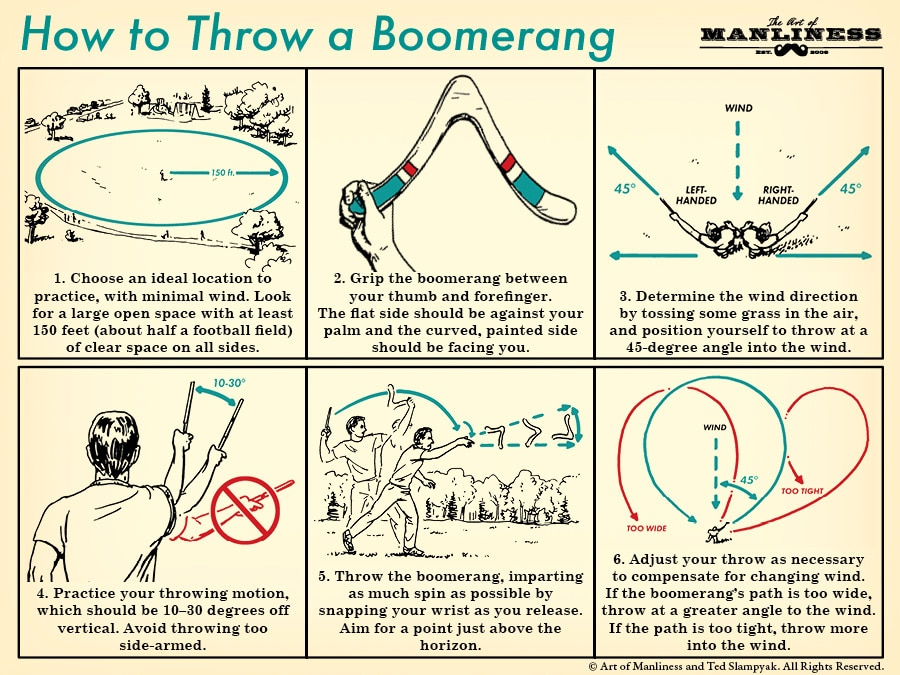
Usually the process goes something like this: Buy a boomerang at a toy store because it sounds fun. Go to an open field to throw the thing. Toss it a half dozen times only to have it clatter to the ground 20 feet away from where you’re standing. Return home and place the boomerang in the back of your closet to be forgotten.
Boomerangs are understandably frustrating. It’s not as intuitive as throwing a baseball or football. What separates a successful throw from an embarrassing one is rooted in a few fundamentals: the right grip, your throwing motion, and evaluating your conditions. Oh, and one more thing, make sure the boomerang you have is an actual “returning boomerang.” Many are just for decoration, which means they fly about as well as a snow globe.
1: Choose an ideal location to practice, with minimal wind. Look for a large open space with at least 150 feet (about half a football field) of clear space on all sides.
2: Grip the boomerang between your thumb and forefinger. The flat side should be against your palm and the curved, painted side should be facing you.
3: Determine the wind direction by tossing some grass in the air, and position yourself to throw at a 45-degree angle into the wind.
4: Practice your throwing motion, which should be10-30 degrees off vertical. Avoid throwing too side-armed.
5: Throw the boomerang, imparting as much spin as possible by snapping your wrist as you release. Aim for a point just above the horizon.
6: Adjust your throw as necessary to compensate for changing wind. If the boomerang’s path is too wide, throw at a greater angle to the wind. If the path is too tight, throw more into the wind.
Like this illustrated guide? Then you’re going to love our book The Illustrated Art of Manliness! Pick up a copy on Amazon.


